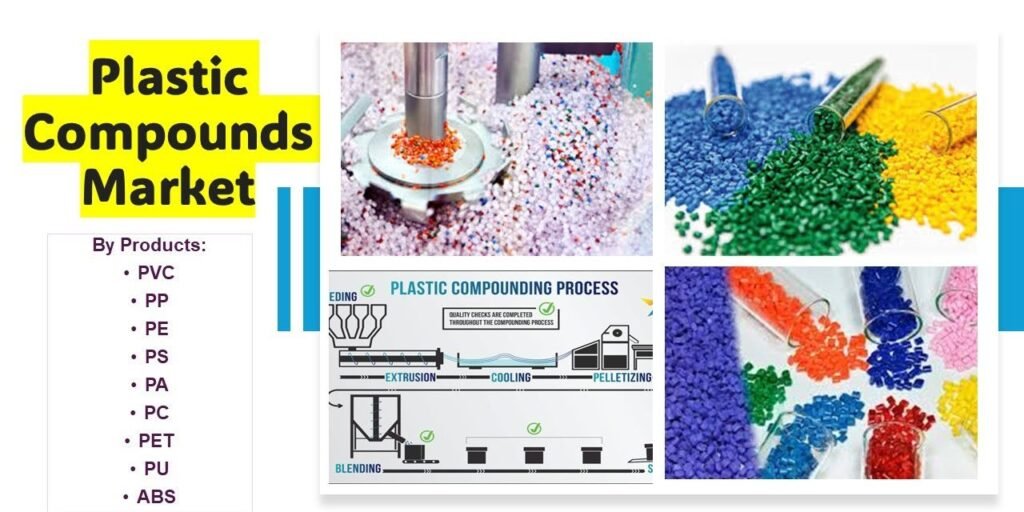
The report “Plastic Compounds Market by Product (PVC, PP, PE, PS, PA, PC, PET, PU, ABS), Source, End-use Industry (Automotive, Packaging, Electrical & Electronics, Building & Construction, Consumer Goods, Medical), and Region – Global Forecast to 2029″, size is projected to grow from USD 70.8 billion in 2024 to USD 97.3 billion by 2029, registering a CAGR of 6.6% during the forecast period. The growth of the plastic compounds market is fueled by several key factors. The packaging and building, & construction industries are seeing increasing demand for plastic compounds for various applications. There is a growing demand for environmentally friendly and sustainable materials from consumers and businesses. Recyclable plastic compounds are being sought as alternatives to conventional plastic compounds.
Download PDF Brochure
Browse
• 259 Market data Tables
• 54 Figures
• 256 Pages and in-depth TOC on “Plastic Compounds Market – Global Forecast to 2029″
Some of the prominent key players are:
- BASF SE (Germany),
- The Dow Chemical Company (US),
- LyondellBasell Industries Holdings B.V. (Netherlands),
- SABIC (Saudi Arabia),
- Asahi Kasei Corporation (Japan), Covestro AG (Germany), and many more….
Driver: Increasing demand in packaging and building & construction industries
The packaging and building, & construction industries are seeing increasing demand for plastic compounds for various applications. In the packaging sector, the increased need for containers for food and beverages, and caps for various products has driven the demand for durable, flexible and cost-effective plastic compounds. In the building & construction industry, plastic compounds are widely used for insulators, pipe fittings, and other construction materials due to their affordability, strength, and versatility. The trend towards energy-efficient construction practices has further boosted the demand for plastic compounds in this industry. Overall, the adaptability and diverse properties of plastic compounds have made them indispensable in meeting the evolving needs of the packaging, and building, & construction industries, driving the growth of the global plastic compounds market.
Request Sample Pages
Bio-based is anticipated to be the fastest growing segment, by source, during the forecast period.
Bio-based plastic compounds are derived from renewable biomass sources, offering a sustainable alternative to traditional fossil-based plastics. These bioplastics are produced from various natural sources such as vegetable fats and oils, corn starch, straw, woodchips, sawdust, and recycled food waste. Bio-based plastics have limited dependence on finite and unevenly distributed fossil fuel resources, which are linked to environmental impacts and geopolitical issues. Life cycle analyses have shown that certain bioplastics can have a lower carbon footprint than fossil-based plastics, especially when biomass is used as both the raw material and for energy production.
Automotive is anticipated to be the third largest segment, by end-use industry, during the forecast period.
Most of the interior, as well as the exterior parts of a modern vehicle, are made with plastic compounds such as PS, PP, PE, and PET. These plastic compounds are used in dashboards, steering wheels, loudspeaker grills, carpets, and door linings, as well as seats, seat belts, and airbags. The use of plastic compounds in various automotive applications helps reduce vehicle weight and fuel consumption. The increasing replacement of conventional materials such as metals and glass by plastic compounds is driving the market for plastic compounds in this segment.
